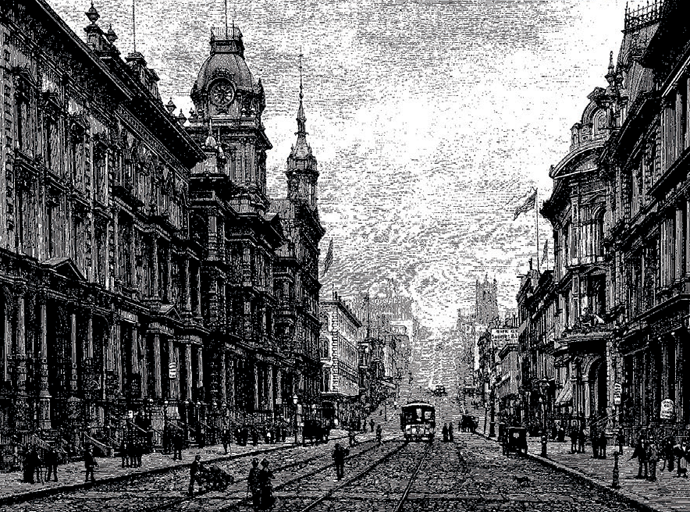I am aware, of course, that San Francisco’s reputation is based largely upon reminiscence. Much of its glamour belongs to a past upon which the native is only too prone to dwell. The old, gay, hedonistic town that captured the imaginations of so many poets, artists, and lovers of life, the city of cheap yet superb living and pleasant, easy-going grace—that laissez-faire city over which middle-aged Californian exiles in New York speakeasies and penthouses still shed sentimental tears and wax lyrical—has passed or is passing. I have contributed my share of sorrow at its passing and of indignation at those forces of “progress” that have destroyed it. I have cursed the city’s winds and raged at its new generation of go-getters. And yet I have only to return to it after a long absence in other parts of the country to know that San Francisco is still significant for something that I have missed elsewhere; that life here really is, in the language of its boosters, “better”—that is, it is freer, cleaner, healthier, more beautiful, and ever so much easier.
The old glamour is not yet entirely gone. The historic cafés that served a generation of true hedonists have succumbed to the vigilance of federal prohibition agents. But the wine still flows freely in snug restaurants. A room with a view—and such a view—is still the cheapest of commonplaces. Flower stalls still blaze at the street corners and, in the side alleys of Chinatown, away from the sumptuous bazaars of Grant Avenue, ancient Chinese doze away their lives in cubbyhole shops filled with herbs and jade-green bowls. The cable cars still swing dangerously, like demented beetles, about the hilltops—those hilltops that will always prove San Francisco’s salvation. The old Montgomery Block houses its third and fourth generation of impoverished young artists and yearners who can’t raise the fare to New York; while the Mexican rebel Diego Rivera paints the murals for the new stock exchange. And San Francisco in modern dress is a thousand times more beautiful than ever.
To live in the heart of San Francisco, on one of her steep hillsides, within a few blocks of Chinatown and the grape-redolent streets of the Latin Quarter, with the tall buildings dropping away beneath you, and the whole magnificent sweep of city, bay, and mountains spread out before your window, is to live in a fairy tale indeed.

Many of San Francisco’s most gifted children have left it regretfully, knowing that nowhere else will they find life so gracious, so physically satisfying. Those who remain because they cannot tear themselves away do so to the frequent frustration of their talents, a frustration that they realize only in middle life and then seek to forget in mystical speculations or in the cup that cheers. Some of San Francisco’s finest talents have been preserved chiefly in alcohol.
Perhaps some degree of inner and outer conflict, of bitterness, despair, and indignation at a world so alien to the heart’s desire, is a prerequisite of the creative process, or at least of its deepest and most stirring manifestations. Perhaps both art and genuine intellectual activity are our compensations for the general unsatisfactoriness of life. But in San Francisco such compensation is less necessary than in any other place I know.
Recently, in front of the most magnificent hotel on Nob Hill, a down-and-outer in torn shoes and weatherbeaten suit struck me for a dime.
“I haven’t eaten for two days, lady,” he said.
Then, as I fished in my purse for the coin, he waved his arm about that semicircle of bay and city that glistened below us in the sunshine.
“Swell, ain’t it?” he said.
That is the trouble with San Francisco.
From “San Francisco—Our Other Metropolis,” which appeared in the April 1932 issue of Harper’s Magazine.





































































































